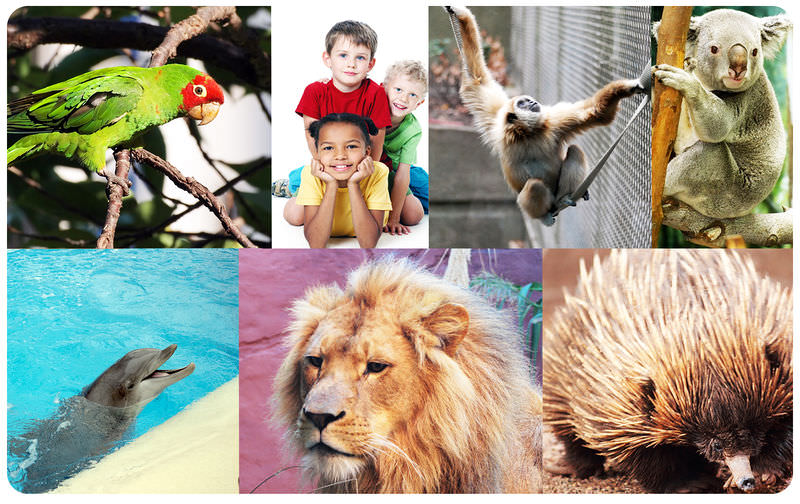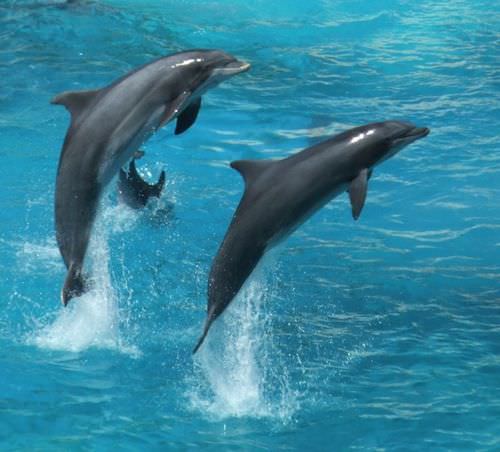12.16: Mammal Overview
- Page ID
- 13252
\( \newcommand{\vecs}[1]{\overset { \scriptstyle \rightharpoonup} {\mathbf{#1}} } \)
\( \newcommand{\vecd}[1]{\overset{-\!-\!\rightharpoonup}{\vphantom{a}\smash {#1}}} \)
\( \newcommand{\dsum}{\displaystyle\sum\limits} \)
\( \newcommand{\dint}{\displaystyle\int\limits} \)
\( \newcommand{\dlim}{\displaystyle\lim\limits} \)
\( \newcommand{\id}{\mathrm{id}}\) \( \newcommand{\Span}{\mathrm{span}}\)
( \newcommand{\kernel}{\mathrm{null}\,}\) \( \newcommand{\range}{\mathrm{range}\,}\)
\( \newcommand{\RealPart}{\mathrm{Re}}\) \( \newcommand{\ImaginaryPart}{\mathrm{Im}}\)
\( \newcommand{\Argument}{\mathrm{Arg}}\) \( \newcommand{\norm}[1]{\| #1 \|}\)
\( \newcommand{\inner}[2]{\langle #1, #2 \rangle}\)
\( \newcommand{\Span}{\mathrm{span}}\)
\( \newcommand{\id}{\mathrm{id}}\)
\( \newcommand{\Span}{\mathrm{span}}\)
\( \newcommand{\kernel}{\mathrm{null}\,}\)
\( \newcommand{\range}{\mathrm{range}\,}\)
\( \newcommand{\RealPart}{\mathrm{Re}}\)
\( \newcommand{\ImaginaryPart}{\mathrm{Im}}\)
\( \newcommand{\Argument}{\mathrm{Arg}}\)
\( \newcommand{\norm}[1]{\| #1 \|}\)
\( \newcommand{\inner}[2]{\langle #1, #2 \rangle}\)
\( \newcommand{\Span}{\mathrm{span}}\) \( \newcommand{\AA}{\unicode[.8,0]{x212B}}\)
\( \newcommand{\vectorA}[1]{\vec{#1}} % arrow\)
\( \newcommand{\vectorAt}[1]{\vec{\text{#1}}} % arrow\)
\( \newcommand{\vectorB}[1]{\overset { \scriptstyle \rightharpoonup} {\mathbf{#1}} } \)
\( \newcommand{\vectorC}[1]{\textbf{#1}} \)
\( \newcommand{\vectorD}[1]{\overrightarrow{#1}} \)
\( \newcommand{\vectorDt}[1]{\overrightarrow{\text{#1}}} \)
\( \newcommand{\vectE}[1]{\overset{-\!-\!\rightharpoonup}{\vphantom{a}\smash{\mathbf {#1}}}} \)
\( \newcommand{\vecs}[1]{\overset { \scriptstyle \rightharpoonup} {\mathbf{#1}} } \)
\( \newcommand{\vecd}[1]{\overset{-\!-\!\rightharpoonup}{\vphantom{a}\smash {#1}}} \)
\(\newcommand{\avec}{\mathbf a}\) \(\newcommand{\bvec}{\mathbf b}\) \(\newcommand{\cvec}{\mathbf c}\) \(\newcommand{\dvec}{\mathbf d}\) \(\newcommand{\dtil}{\widetilde{\mathbf d}}\) \(\newcommand{\evec}{\mathbf e}\) \(\newcommand{\fvec}{\mathbf f}\) \(\newcommand{\nvec}{\mathbf n}\) \(\newcommand{\pvec}{\mathbf p}\) \(\newcommand{\qvec}{\mathbf q}\) \(\newcommand{\svec}{\mathbf s}\) \(\newcommand{\tvec}{\mathbf t}\) \(\newcommand{\uvec}{\mathbf u}\) \(\newcommand{\vvec}{\mathbf v}\) \(\newcommand{\wvec}{\mathbf w}\) \(\newcommand{\xvec}{\mathbf x}\) \(\newcommand{\yvec}{\mathbf y}\) \(\newcommand{\zvec}{\mathbf z}\) \(\newcommand{\rvec}{\mathbf r}\) \(\newcommand{\mvec}{\mathbf m}\) \(\newcommand{\zerovec}{\mathbf 0}\) \(\newcommand{\onevec}{\mathbf 1}\) \(\newcommand{\real}{\mathbb R}\) \(\newcommand{\twovec}[2]{\left[\begin{array}{r}#1 \\ #2 \end{array}\right]}\) \(\newcommand{\ctwovec}[2]{\left[\begin{array}{c}#1 \\ #2 \end{array}\right]}\) \(\newcommand{\threevec}[3]{\left[\begin{array}{r}#1 \\ #2 \\ #3 \end{array}\right]}\) \(\newcommand{\cthreevec}[3]{\left[\begin{array}{c}#1 \\ #2 \\ #3 \end{array}\right]}\) \(\newcommand{\fourvec}[4]{\left[\begin{array}{r}#1 \\ #2 \\ #3 \\ #4 \end{array}\right]}\) \(\newcommand{\cfourvec}[4]{\left[\begin{array}{c}#1 \\ #2 \\ #3 \\ #4 \end{array}\right]}\) \(\newcommand{\fivevec}[5]{\left[\begin{array}{r}#1 \\ #2 \\ #3 \\ #4 \\ #5 \\ \end{array}\right]}\) \(\newcommand{\cfivevec}[5]{\left[\begin{array}{c}#1 \\ #2 \\ #3 \\ #4 \\ #5 \\ \end{array}\right]}\) \(\newcommand{\mattwo}[4]{\left[\begin{array}{rr}#1 \amp #2 \\ #3 \amp #4 \\ \end{array}\right]}\) \(\newcommand{\laspan}[1]{\text{Span}\{#1\}}\) \(\newcommand{\bcal}{\cal B}\) \(\newcommand{\ccal}{\cal C}\) \(\newcommand{\scal}{\cal S}\) \(\newcommand{\wcal}{\cal W}\) \(\newcommand{\ecal}{\cal E}\) \(\newcommand{\coords}[2]{\left\{#1\right\}_{#2}}\) \(\newcommand{\gray}[1]{\color{gray}{#1}}\) \(\newcommand{\lgray}[1]{\color{lightgray}{#1}}\) \(\newcommand{\rank}{\operatorname{rank}}\) \(\newcommand{\row}{\text{Row}}\) \(\newcommand{\col}{\text{Col}}\) \(\renewcommand{\row}{\text{Row}}\) \(\newcommand{\nul}{\text{Nul}}\) \(\newcommand{\var}{\text{Var}}\) \(\newcommand{\corr}{\text{corr}}\) \(\newcommand{\len}[1]{\left|#1\right|}\) \(\newcommand{\bbar}{\overline{\bvec}}\) \(\newcommand{\bhat}{\widehat{\bvec}}\) \(\newcommand{\bperp}{\bvec^\perp}\) \(\newcommand{\xhat}{\widehat{\xvec}}\) \(\newcommand{\vhat}{\widehat{\vvec}}\) \(\newcommand{\uhat}{\widehat{\uvec}}\) \(\newcommand{\what}{\widehat{\wvec}}\) \(\newcommand{\Sighat}{\widehat{\Sigma}}\) \(\newcommand{\lt}{<}\) \(\newcommand{\gt}{>}\) \(\newcommand{\amp}{&}\) \(\definecolor{fillinmathshade}{gray}{0.9}\)
One of these is not a mammal. Which one?
Mammals are a class of endothermic vertebrates. They have four limbs and produce amniotic eggs. Examples of mammals include bats, whales, mice, and humans. Clearly, mammals are a very diverse group. Nonetheless, they share many traits that set them apart from other vertebrates.
Characteristics of Mammals
Two characteristics are used to define the mammal class. They are mammary glands and body hair (or fur).
- Female mammals have mammary glands. The glands produce milk after the birth of offspring. Milk is a nutritious fluid. It contains disease-fighting molecules as well as all the nutrients a baby mammal needs. Producing milk for offspring is called lactation.
- Mammals have hair or fur. It insulates the body to help conserve body heat. It can also be used for sensing and communicating. For example, cats use their whiskers to sense their surroundings. They also raise their fur to look larger and more threatening (see Figure below).
 Cat Communicating a Warning. By raising its fur, this cat is “saying” that it’s big and dangerous. This might discourage a predator from attacking.
Cat Communicating a Warning. By raising its fur, this cat is “saying” that it’s big and dangerous. This might discourage a predator from attacking.Most mammals share several other traits. The traits in the following list are typical of, but not necessarily unique to, mammals.
- The skin of many mammals is covered with sweat glands. The glands produce sweat, the salty fluid that helps cool the body.
- Mammalian lungs have millions of tiny air sacs called alveoli. They provide a very large surface area for gas exchange.
- The heart of a mammal consists of four chambers. This makes it more efficient and powerful for delivering oxygenated blood to tissues.
- The brain of a mammal is relatively large and has a covering called the neocortex. This structure plays an important role in many complex brain functions.
- The mammalian middle ear has three tiny bones that carry sound vibrations from the outer to inner ear. The bones give mammals exceptionally good hearing. In other vertebrates, the three bones are part of the jaw and not involved in hearing.
- Mammals have four different types of teeth. The teeth of other vertebrates, in contrast, are all alike.
 Dolphins are mammals that have adapted to swimming and reproducing in water.
Dolphins are mammals that have adapted to swimming and reproducing in water.Summary
- Mammals are a class of endothermic vertebrates.
- Mammals have four limbs and produce amniotic eggs.
- The mammal class is defined by the presence of mammary glands and hair (or fur).
- Other traits of mammals include sweat glands in their skin, alveoli in their lungs, a four-chambered heart, and a brain covering called the neocortex.
Review
- List five traits that are shared by all mammals, including the two traits that are used to define the mammal class.
| Image | Reference | Attributions |
 |
[Figure 1] | Credit: User:Bourrichon/Wikimedia Commons;Flight: Sami Sieranoja; Down: Hans Braxmeier Source: commons.wikimedia.org/wiki/File:Brains-fr.svg ; https://www.flickr.com/photos/usfwsmtnprairie/22849558584/in/photolist-AP8XGC-dpsWAp-oT4vXF-dpt5Bb-nHTESb-853uob-zjDhaY-dpsTJV-dpt36G-dpt5bf-pPBMEx-oSW25z-pNuxEh-pCidrM-dpsSYT-dpt3C3-dpsTuV-87wNYE-pNrquE-87dh1f-dpt4CL-oSTx9u-62Zzia-5mfEgV-5mfEB2-pxihxy-dpt6aU-oSX2Xe-dpsWWi-pxjxnv-oSXoeM-dpsVZR-dpt6No-dpsSUx-dpsSK2-dpt5tW-dpsWeK-87a5PX-zZGrcU-APejNe-zKcx5G-z5XtpA-BjvmxN-rvpsaJ-GZ2c3w-zZHccY-x3keQG-xGKasm-xX2Nab-rwByvn License: CC BY-NC |
 |
[Figure 2] | Credit: Luis Miguel Bugallo Sánchez Source: commons.wikimedia.org/wiki/File:Gato_enervado_pola_presencia_dun_can.jpg License: CC BY 2.0 |
 |
[Figure 3] | Credit: Flickr:talkrhubarb Source: http://www.flickr.com/photos/talkrhubarb/223175100/ License: CC BY 2.0 |

